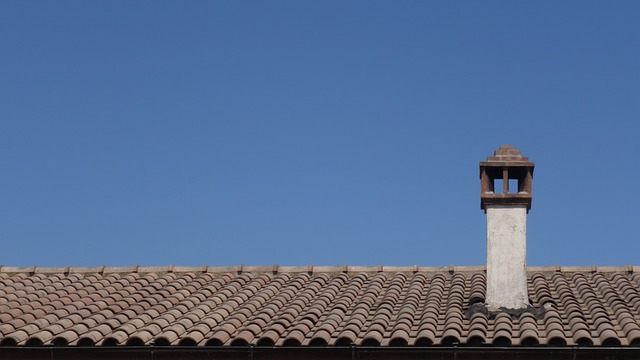Natural ventilation, facilitated by eco-friendly roof solutions like green roofs and living roofs, is a sustainable and cost-effective strategy for improving indoor air quality and energy efficiency in buildings. These solutions reduce energy consumption, lower cooling costs, and minimize carbon footprints, especially in warm climates. By integrating strategic window, vent, and skylight placement, these innovative systems enhance aesthetics, regulate temperatures, and improve air quality, aligning with sustainable building goals. Recent trends show increased adoption of natural ventilation features like green roofs and living walls, demonstrating significant energy conservation and improved building performance.
In today’s quest for energy-efficient buildings, integrating natural ventilation features offers a sustainable and cost-effective solution. This article explores how understanding and leveraging natural airflow can significantly enhance indoor comfort while reducing energy consumption. We delve into key strategies like eco-friendly roof solutions, design considerations, and green building practices proven to optimize airflow. Additionally, real-world case studies highlight successful integrations of natural ventilation, providing valuable insights for architects and builders seeking innovative, sustainable designs.
Understanding Natural Ventilation and Its Benefits
Natural ventilation is a powerful tool for enhancing indoor air quality and energy efficiency in buildings, especially with the advent of modern construction methods that often seal out external airflow. By strategically incorporating openings and design elements that facilitate the movement of air, natural ventilation provides a sustainable and cost-effective way to cool spaces without relying heavily on mechanical systems. This ancient practice has seen a resurgence in popularity due to its numerous environmental and economic benefits, as well as its contribution to creating healthier living and working environments.
One of the key advantages lies in its ability to reduce energy consumption. Unlike air conditioning units, natural ventilation requires no external power source, making it an eco-friendly roof solution that minimizes carbon footprint. Additionally, by maintaining optimal temperature and humidity levels, it can lower cooling costs significantly. This is particularly beneficial in regions with warm climates, where proper design can ensure a pleasant interior environment without excessive energy expenditure.
The Role of Eco-Friendly Roof Solutions
Eco-friendly roof solutions play a pivotal role in integrating natural ventilation features for better airflow and efficiency. These innovative systems go beyond traditional roofing, incorporating materials and designs that enhance environmental sustainability and indoor comfort. For instance, green roofs—which feature layers of soil and plants—not only improve insulation but also provide a natural cooling effect through evapotranspiration, reducing the need for artificial air conditioning.
Moreover, eco-friendly roof solutions contribute to better airflow by allowing for the creation of pressure differentials that draw in fresh air. Certain designs include ventilating tiles or integrated solar panels with optimized airflow channels. This not only improves indoor air quality but also reduces energy consumption associated with climate control, making them a compelling choice for both residential and commercial buildings seeking enhanced efficiency and reduced environmental impact.
Design Considerations for Optimal Airflow
When designing spaces with natural ventilation as a priority, several key considerations come into play for optimal airflow and overall efficiency. One of the most innovative and eco-friendly roof solutions gaining traction is the implementation of green roofs or living roofs. These features not only enhance aesthetics but also serve as powerful tools to regulate indoor temperatures and improve air quality. By integrating vegetation into rooftops, architects can create a natural insulation effect, reducing the need for artificial cooling systems during warmer months.
Additionally, strategic placement of windows, vents, and skylights is essential. Designers should consider cross-ventilation techniques by positioning openings on opposite sides of a structure to allow for the flow of fresh air. Natural light is another benefit; it can be maximized through well-placed windows, reducing the reliance on artificial lighting and contributing to overall energy efficiency. These design choices not only promote better airflow but also create healthier indoor environments while offering sustainable solutions in line with eco-friendly roof solutions.
Implementing Green Building Practices
Implementing green building practices is an integral part of creating sustainable and energy-efficient spaces, especially when focusing on natural ventilation. One innovative approach to enhancing airflow is by utilizing eco-friendly roof solutions. These designs incorporate elements like green roofs or living roofs, where vegetation is grown on a waterproof membrane, providing insulation and allowing for natural cooling. Not only do they improve indoor air quality, but they also offer an aesthetically pleasing finish.
Additionally, strategic placement of windows and vents can facilitate cross-ventilation, further optimizing airflow. By embracing these eco-conscious strategies, buildings can achieve better thermal comfort while reducing the reliance on mechanical systems, resulting in significant energy savings and a smaller carbon footprint.
Case Studies: Successful Integrations of Natural Ventilation
In recent years, numerous architecture and design projects have successfully integrated natural ventilation features, demonstrating their effectiveness in enhancing indoor air quality and energy efficiency. These case studies offer valuable insights into how modern buildings can embrace sustainable practices while improving overall comfort and performance. For instance, the iconic eco-friendly roof solutions like green roofs and living walls have been implemented in urban developments, where strategic planting and vertical gardens create natural cooling effects, reducing the urban heat island effect.
Another notable example is the use of cross-ventilation strategies in residential and commercial buildings, where carefully designed window placements and open spaces allow for the creation of a gentle breeze, eliminating the need for artificial cooling systems. These successful integrations not only showcase the aesthetic appeal of natural ventilation but also its significant impact on energy conservation, making them popular choices among architects and environmentally conscious developers.
Integrating natural ventilation features through eco-friendly roof solutions is a powerful strategy for enhancing building efficiency and comfort. By understanding the benefits of natural airflow, considering thoughtful design, and adopting green building practices, architects and builders can create sustainable spaces that reduce energy costs and improve occupant well-being. The case studies presented demonstrate the successful implementation of these strategies, highlighting the potential for widespread adoption in the built environment.
